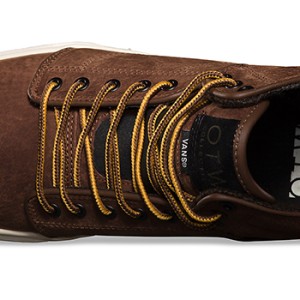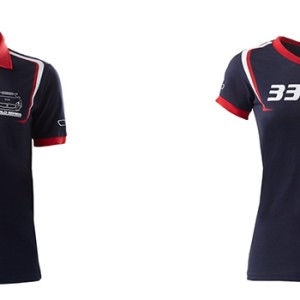 1,457
1,457
Eyes on the Line » Scott Toepfer
It’s 85 degrees out here in the California desert — not bad for 7:30am in June. I’m standing amongst about 25 other folks, drinking some coffee and holding my camera. All is usual except for one thing: my stomach is turning inside out, and it isn’t because of the roach coach black coffee. I’m watching a legend on the start line at the El Mirage Dry Lakebed, and I’ve realized that in a few short months, I will be on this very line, about to take off and reach for a record speed. Unsure exactly how I’ve got myself into the situation, I relax behind the camera and get into a comfortable rhythm.
This all started a couple years ago. I had been watching races the way many of us have — sitting in the stands with a couple of buds, hooting and hollering at the racers as they flew past us. We all verbally dream about what it would be like to do “that.” The conversation continues through the night, pipe dreams building throughout. That conversation would usually come to an end by the morning when our routines would take hold and beg to be fulfilled, and that would be that.
The first time I went to Bonneville, it was the perfect excuse to get some great photos and avoid my high school reunion. I’d seen the films depicting the legendary race course, and I wasn’t going to miss the free ride out there. All of my photographic needs were met over the weekend, but I bought a rulebook from the Southern California Timing Association trailer and began to read it. By the time we were back home, I had read damn near the entire thing, and began planning. But as usual, I shelved the idea while home, and work took me back from the clouds.
Then I met my flathead and everything changed.
I went out on a huge limb and purchased an antique motorcycle via eBay. I didn’t really have the money at the time, but the moment I laid eyes on it, it had to be mine. Money is a funny thing; after making a few “adjustments”, I had a Harley-Davidson 45″ heading my way from the East Coast. It wasn’t pretty, but I was told that the motorcycle ran, which is all I needed to hear. It came off the truck after two weeks of traveling and started immediately. This would become my daily rider, and the whole basis for what has become my “Eyes on the Line” project.
I’d decided that the pinnacle of riding motorcycles was racing. I’ve been fortunate enough to ride across this country via motorcycle, and I still watch racing with a jaw-dropping sense of awe. But if you want to race, your intimacy with the bike has to go beyond tuning and cosmetics. You need to know everything from how it handles in the corners to how to fix it, and this is the level of rider I wanted to become. I wanted to stop being just a spectator. I wanted to participate. And, in turn, record what it feels like to go from motorcycle rider/photographer/groupie/nerd into a competitive racer.
Anyone who knows me knows I am 1) not that much of a physical risk taker, 2) a klutz, and 3) prone to failure. I’m a rookie’s rookie. “But hell,” I thought. “just go for it, and see where you go.”
About 10 months ago, I started building this motorcycle to race. The first time was for the Hell on Wheels Halloween Hillclimb. I stripped it down to the bare essentials and gave it some tires worthy of dirt. The bike looked and ran great, but I ultimately ended up flipping it over just before the top of the hill and rolled most of the way down on my ass. I got a couple high-fives, but my competitive nature was beaten that day.
Even that short stretch of race anxiety had my nerves pegged in a new way. I was determined to take another hack at this racing thing, and that land speed racing was my ticket. I stripped the bike down again and went in a whole new direction. Hoping not to make a fool of myself out on the salt in front of 200-mph club legends, I enlisted a little help from The Shop, a local American bike holdout, and we went about working on the motor. Metallhaus, another local shop, worked tirelessly with me on the chassis.
Six months later, the outright stress over unavailable and incompatible parts, twisted frame sections, chain lines, clearances, and tolerances had me at wits end, but the motorcycle was finished two days before leaving for the salt. One of my shooting partners, Justin Donais, and I took the motorcycle out the orchard roads of Santa Paula just to run it, set the rings a bit, and see if some of our chassis ideas would even be functional in a tucked position.
As a note, I don’t recommend farm roads for this. The combination of dust, tractors pulling out into traffic on two lane roads, and a motorcycle with just enough braking power to stop it over a mile of salt in an exact straight line doesn’t exactly exude safety. But again, the bike ran and got through the gears, so I was happy enough to keep moving forward.
We left for Bonneville on the Thursday before the beginning of Speed Week. We’d heard rumors of rain in the area, but had come too far to be wary of rain delays. Sunflower seeds, jerky, and a few jugs of water, and we were off through Nevada and some sort of twisted destiny. A couple calls to Johnny McClure, my mechanic and fellow racer, and we’d heard about more rain and continued on. The racing had been delayed a day, then two days.
When we arrived at the course, we could see why: the Bonneville salt flats had become a great salt lake. Knee deep at the road’s end, we were surrounded by fellow saddened and frustrated travelers hoping to make some noise. Being early still, everyone kept their optimism until a torrential downpour like I had never seen before started to pour down on us in the hotel parking lot. Rivers of water appeared in Wendover over the course of a few minutes, and I knew we were most likely heading home a few days early.
The news was finally broken the following morning, and in a calm grief, we packed up to get out of town, each with a few extra bucks in our pockets thanks to the craps tables. The roads were completely empty; apparently, nobody else was leaving just yet. We checked out of the hotel early, lost our nonrefundable deposit, and were on our way. Then, about 30 miles out of town, the road got long, straight and desolate, and we figured that not taking the motorcycle out of the van at least once was the greatest sting of all.
So, we pulled over. Suited up, cameras rolling, and with nothing and no one for miles, the bike ran as fast as the initial tuning would take it. I only wanted to crack 100-mph at Speed Week — you know, just to scratch at the record attempt and hit a motorcycling benchmark speed. I found out that the old flathead might be capable of a bit more than that. With no extra tuning other than to pull off the air filter, it passed my van while maxed out on the speedometer, and I was in new territory.
Totally unaware of my speed, it ran and ran for a few miles and only seemed to bog once the plugs began to fail from the rich jetting. The motorcycle felt sturdy and stable, and with the location devoid of traffic, I felt completely at ease with the ride. While it may not have been real, sanctioned racing, I thought it was pretty cool. The state trooper that pulled in behind us did, too.
And that’s where the story stands — with a motorcycle capable of speed, but a flooded course. By the time you read this, I’ll be pushing at El Mirage and hopefully the World Finals where we will be completing the film and the story for the first year.
Words by Scott Toepfer, Images by Scott Toepfer and Samson Hatae
Feature from Issue Sixteen of Iron & Air magazine
Via Whiskey Grade

























DON'T BE SHY, LEAVE A COMMENT!